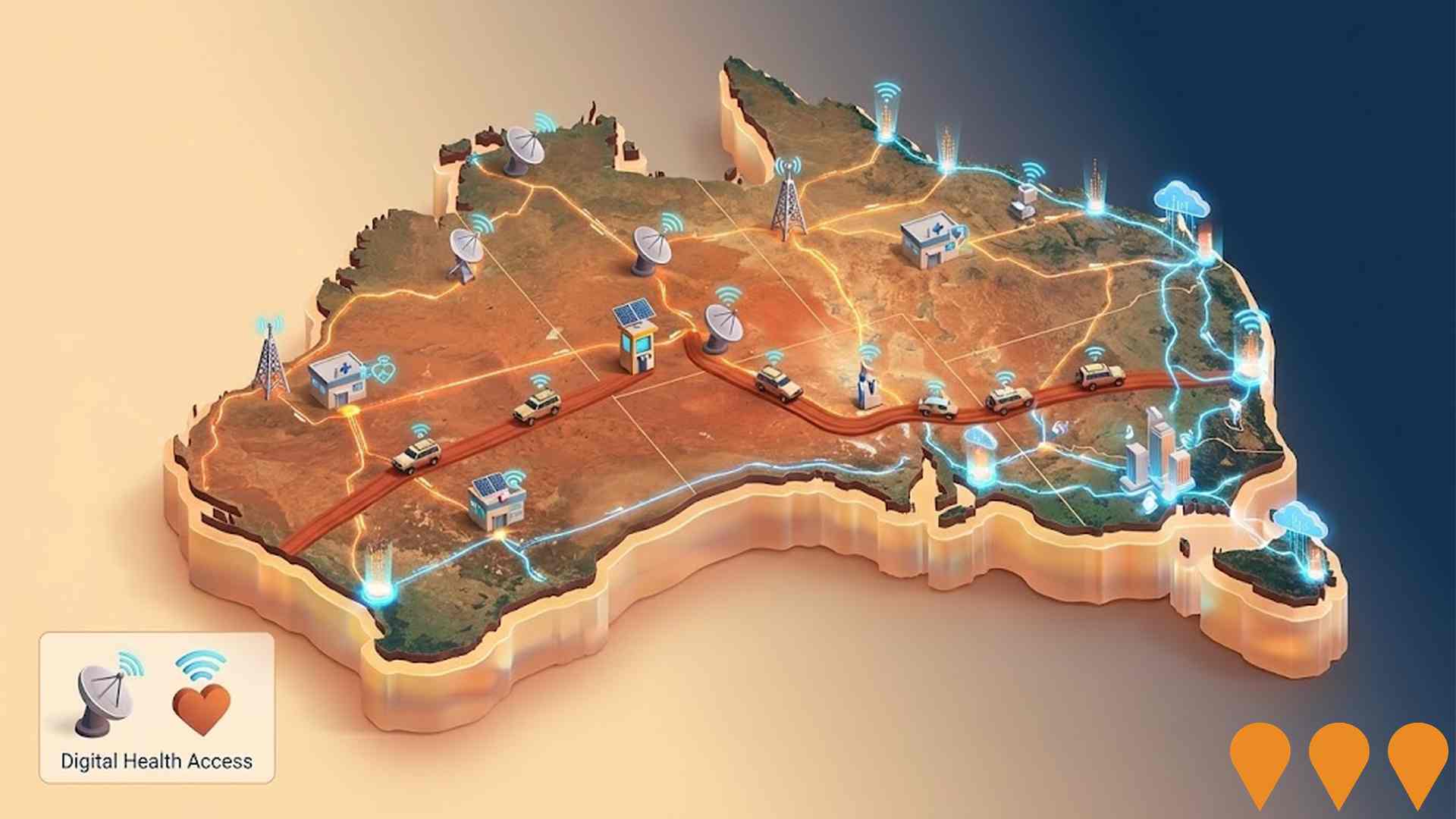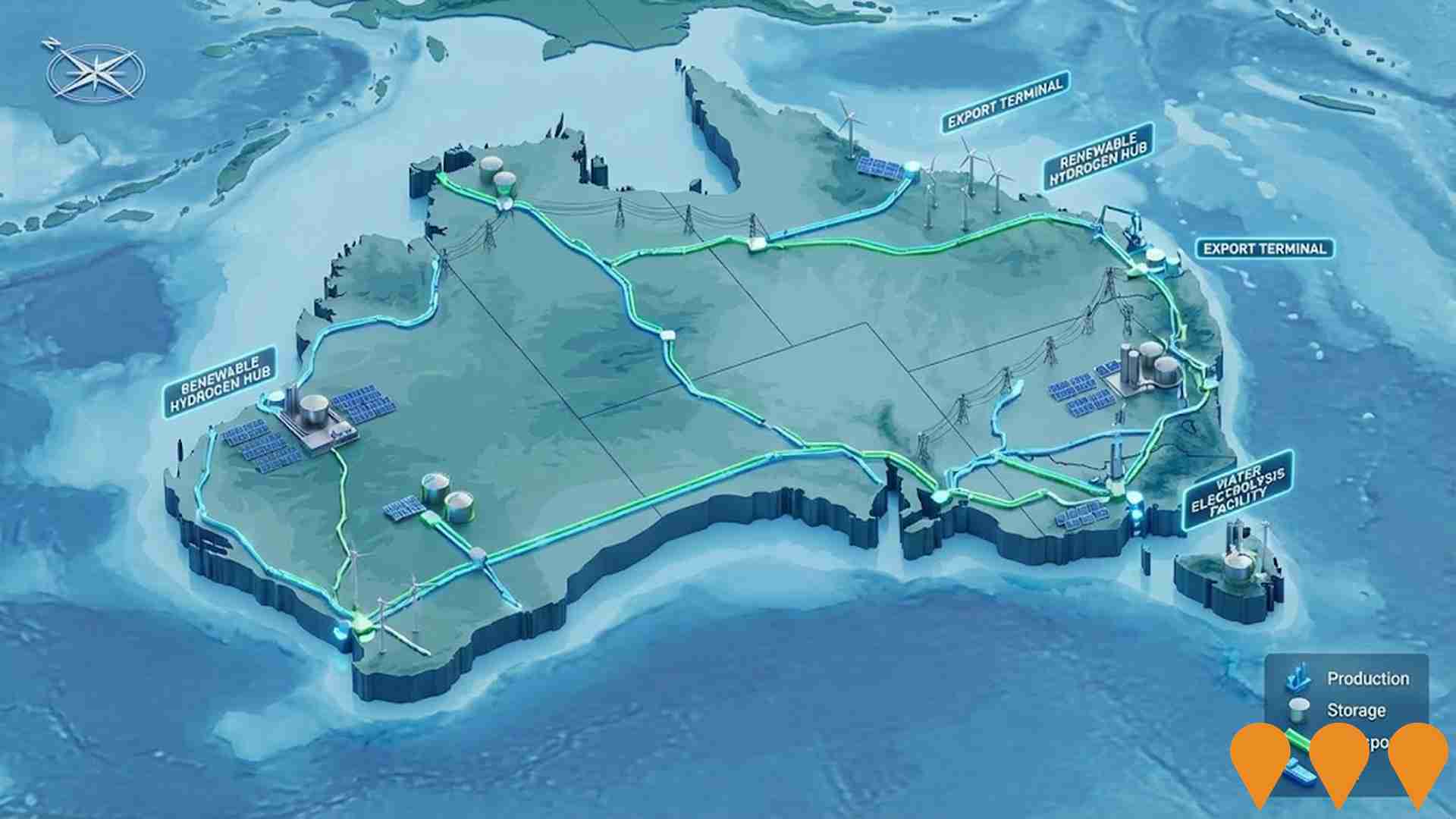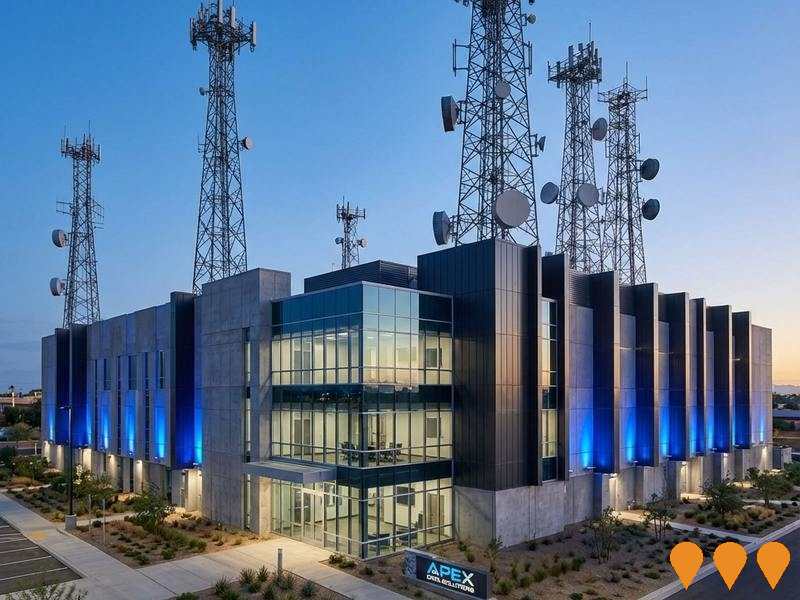Chart Color Schemes
est. as @ -- *
ABS ERP | -- people | --
2021 Census | -- people
Sales Activity
Curious about local property values? Filter the chart to assess the volume and appreciation (including resales) trends and regional comparisons, or scroll to the map below view this information at an individual property level.
Find a Recent Sale
Sales Detail
Population
Coober Pedy has shown very soft population growth performance across periods assessed by AreaSearch
Coober Pedy's population, according to AreaSearch's analysis, is approximately 1,518 as of August 2025. This figure represents a decrease of 48 people, equating to a 3.1% decline since the 2021 Census, which reported a population of 1,566. The change is inferred from the estimated resident population of 1,527 as of June 2024 and address validation since the Census date. This results in a population density ratio of 19.5 persons per square kilometer. Population growth was primarily driven by overseas migration during recent periods.
AreaSearch adopts ABS/Geoscience Australia projections for each SA2 area, released in 2024 with a base year of 2022. For areas not covered and years post-2032, the SA State Government's Regional/LGA projections by age category are used, based on 2021 data and released in 2023, with adjustments made via weighted aggregation from LGA to SA2 levels. Future trends indicate a decline in overall population, with a projected reduction of 17 persons by 2041. However, specific age cohorts are expected to grow, notably the 85 and over group, which is projected to increase by 53 people.
Frequently Asked Questions - Population
Development
Residential dwelling approval activity has been practically non-existent in Coober Pedy
Coober Pedy has seen minimal development activity with an average of less than one approval per year over five years (two approvals). This low level of development is characteristic of rural areas where housing needs are specific and locally driven rather than market-driven. The small sample size means individual projects can significantly impact annual growth statistics.
Coober Pedy's development levels are notably lower than the rest of South Australia and below national averages. With stable or declining population forecasts, housing pressure in Coober Pedy is expected to remain low, potentially benefiting buyers.
Given stable or declining population forecasts, Coober Pedy may experience less housing pressure, creating favourable conditions for buyers.
Frequently Asked Questions - Development
Infrastructure
Coober Pedy has moderate levels of nearby infrastructure activity, ranking in the 42ndth percentile nationally
No changes can significantly affect a region's performance like modifications to local infrastructure, major projects, and planning initiatives. AreaSearch has identified zero projects expected to impact this area. Notable projects include Gawler Craton Rail Access, Bulk Water Supply Security, Northern Water Supply Project, and Enabling Infrastructure for Hydrogen Production. The following list details those most relevant:.
Professional plan users can use the search below to filter and access additional projects.
INFRASTRUCTURE SEARCH
 Denotes AI-based impression for illustrative purposes only, not to be taken as definitive under any circumstances. Please follow links and conduct other investigations from the project's source for actual imagery. Developers and project owners wishing us to use original imagery please Contact Us and we will do so.
Denotes AI-based impression for illustrative purposes only, not to be taken as definitive under any circumstances. Please follow links and conduct other investigations from the project's source for actual imagery. Developers and project owners wishing us to use original imagery please Contact Us and we will do so.
Frequently Asked Questions - Infrastructure
Enabling Digital Health Services for Regional and Remote Australia
National initiative to expand and improve digital health access for people in regional and remote Australia. Focus areas include enabling telehealth and virtual care, upgrading clinical systems and connectivity, supporting secure information exchange, and building workforce capability in digital health, aligned with the Australian Government's Digital Health Blueprint and Action Plan 2023-2033.

Enabling Infrastructure for Hydrogen Production
Australia has completed the National Hydrogen Infrastructure Assessment (NHIA) to 2050 and refreshed its National Hydrogen Strategy (2024). The programmatic focus has shifted to planning and enabling infrastructure through measures such as ARENA's Hydrogen Headstart and the Hydrogen Production Tax Incentive (from April 2025). Round 2 of Hydrogen Headstart consultation occurred in 2025. Collectively these actions aim to coordinate investment in transport, storage, water and electricity inputs linked to Renewable Energy Zones and priority hubs, supporting large-scale renewable hydrogen production and future export supply chains.

Bulk Water Supply Security
Nationwide program led by the National Water Grid Authority to improve bulk water security and reliability for non-potable and productive uses. Activities include strategic planning, science and business cases, and funding of state and territory projects such as storages, pipelines, dam upgrades, recycled water and efficiency upgrades to build drought resilience and support regional communities, industry and the environment.

National EV Charging Network (Highway Fast Charging)
Partnership between the Australian Government and NRMA to deliver a backbone EV fast charging network on national highways. Program funds and co-funds 117 DC fast charging sites at roughly 150 km intervals to connect all capital cities and regional routes, reducing range anxiety and supporting EV uptake.

Network Optimisation Program - Roads
A national program concept focused on improving congestion and reliability on urban road networks by using low-cost operational measures and technology (e.g., signal timing, intersection treatments, incident management) to optimise existing capacity across major city corridors.

Gawler Craton Rail Access
The proposal is for a third party to build, own, and operate a 350 km railway in the Gawler Craton province, linking to the existing interstate rail network. It aims to provide significant transport connections to mines such as Prominent Hill, Olympic Dam, and Carrapateena, and open up other potential reserves including Wirrda Well, Acropolis, Vulcan, Titan, and Millers Creek. The project could facilitate exploration and development in the remote mineral region, which contains extensive copper, gold, silver, and iron ore deposits.

Northern Water Supply Project
The Northern Water Supply Project is a transformational water infrastructure initiative to enhance water security in Far North South Australia. The project involves construction of a seawater reverse osmosis desalination plant at Cape Hardy in the Spencer Gulf with up to 260 megalitres per day capacity, connected by a 600-kilometre pipeline network to the Upper Spencer Gulf and Far North regions. The project aims to service mining operations, industry (including hydrogen), Department of Defence, remote communities, pastoralists and SA Water, reducing reliance on the Great Artesian Basin, River Murray and local groundwater resources. The main transfer pipeline will link Eastern Eyre Peninsula, Whyalla, Port Augusta, Woomera, Carapateena, Roxby Downs, Pimba, Oak Dam and Olympic Dam. Supporting infrastructure includes pumping stations, large storage facilities, flow regulation valves, control facilities, and electricity transmission lines. The project supports the South Australian Government's Copper Strategy to triple copper production to 1 million tonnes per year by 2030 and enables growth in clean energy and hydrogen industries.

Advanced Train Management System Implementation On The Interstate Rail Network
The Advanced Train Management System (ATMS) enhances Australia's interstate freight rail network's safety, efficiency, and capacity by replacing traditional signalling with a communication-based control system.

Employment
Employment conditions in Coober Pedy face significant challenges, ranking among the bottom 10% of areas assessed nationally
Coober Pedy has a skilled workforce with essential services sectors well represented. The unemployment rate was 15.2% as of June 2022.
Employment growth over the past year was estimated at 2.4%. As of June 2025649 residents were in work while the unemployment rate was 10.6%, significantly higher than Rest of SA's rate of 4.6%. Workforce participation lagged at 43.1% compared to Rest of SA's 54.1%. Employment among residents was concentrated in accommodation & food, health care & social assistance, and retail trade.
The area had a particularly notable concentration in accommodation & food, with employment levels at 2.8 times the regional average. Agriculture, forestry & fishing was under-represented, with only 0.0% of Coober Pedy's workforce compared to 14.5% in Rest of SA. Over the 12 months to June 2025, employment increased by 2.4% while labour force increased by 5.7%, causing the unemployment rate to rise by 2.7 percentage points. In comparison, Rest of SA saw employment fall by 1.2%, labour force expand by 0.1%, and unemployment rise by 1.2 percentage points. Jobs and Skills Australia's national employment forecasts from May 2025 projected that national employment would expand by 6.6% over five years and 13.7% over ten years, with growth rates differing significantly between industry sectors. Applying these projections to Coober Pedy's employment mix suggested local growth of approximately 6.3% over five years and 13.4% over ten years.
Frequently Asked Questions - Employment
Income
Income metrics place the area in the bottom 10% of locations nationally according to AreaSearch analysis
AreaSearch's aggregation of latest postcode level ATO data for financial year 2022 shows Coober Pedy had a median income among taxpayers of $45,028. The average income was $53,629. Both figures are below the national average. In comparison, Rest of SA had median and average incomes of $46,889 and $56,582 respectively. Based on Wage Price Index growth of 12.83% since financial year 2022, estimated current incomes as of September 2025 are approximately $50,805 (median) and $60,510 (average). The 2021 Census shows household, family, and personal incomes in Coober Pedy fall between the 1st and 4th percentiles nationally. Income brackets indicate 34.9% of residents earn $400 - $799 weekly, contrasting with the regional pattern where 27.5% earn $1,500 - $2,999 weekly. A notable 52.7% of households earn below $800 weekly, suggesting affordability pressures for many residents. Despite modest housing costs with 89.1% of income retained, total disposable income ranks at the 3rd percentile nationally.
Frequently Asked Questions - Income
Housing
Coober Pedy is characterized by a predominantly suburban housing profile, with above-average rates of outright home ownership
Coober Pedy's dwelling structure, as per the latest Census, consisted of 88.6% houses and 11.3% other dwellings (semi-detached, apartments, 'other' dwellings), compared to Non-Metro SA's 85.7% houses and 14.3% other dwellings. Home ownership in Coober Pedy stood at 47.3%, with mortgaged dwellings at 15.6% and rented ones at 37.1%. The median monthly mortgage repayment was $630, below Non-Metro SA's average of $1,138. Median weekly rent in Coober Pedy was $163, compared to Non-Metro SA's $187. Nationally, Coober Pedy's mortgage repayments were significantly lower than the Australian average of $1,863, and rents were substantially below the national figure of $375.
Frequently Asked Questions - Housing
Household Composition
Coober Pedy features high concentrations of lone person households, with a lower-than-average median household size
Family households constitute 42.3% of all households, including 12.7% couples with children, 20.4% couples without children, and 7.7% single parent families. Non-family households account for the remaining 57.7%, with lone person households making up 53.3% and group households comprising 3.7%. The median household size is 1.8 people, which is smaller than the Rest of South Africa average of 2.4.
Frequently Asked Questions - Households
Local Schools & Education
Coober Pedy faces educational challenges, with performance metrics placing it in the bottom quartile of areas assessed nationally
The area faces educational challenges, with university qualification rates at 19.2%, substantially below the Australian average of 30.4%. This represents both a challenge and an opportunity for targeted educational initiatives. Bachelor degrees lead at 13.0%, followed by postgraduate qualifications (4.2%) and graduate diplomas (2.0%). Trade and technical skills feature prominently, with 41.0% of residents aged 15+ holding vocational credentials – advanced diplomas (10.7%) and certificates (30.3%).
Educational participation is notably high, with 32.6% of residents currently enrolled in formal education. This includes 10.5% in primary education, 9.6% in secondary education, and 3.3% pursuing tertiary education. Coober Pedy Area School provides local educational services within Coober Pedy, with an enrollment of 156 students as of the latest data. The area demonstrates varied educational conditions across Coober Pedy. All 1 schools offer integrated K-12 education, providing continuity throughout students' academic journey. School places per 100 residents stand at 10.3, falling below the regional average of 15.4, with some students likely attending schools in adjacent areas.
Frequently Asked Questions - Education
Schools Detail
Nearby Services & Amenities
Transport
No public transport data available for this catchment area.
Frequently Asked Questions - Transport
Transport Stops Detail
Health
Health performance in Coober Pedy is lower than average with common health conditions somewhat prevalent across both younger and older age cohorts
Coober Pedy faces significant health challenges with common health conditions prevalent across both younger and older age cohorts. The rate of private health cover is very low at approximately 47% of the total population (around 713 people), compared to 53.1% across the Rest of SA, which is lower than the national average of 55.3%. The most common medical conditions in the area are arthritis and diabetes, impacting 9.5% and 6.9% of residents respectively.
Meanwhile, 64.5% of residents declare themselves completely clear of medical ailments, compared to 68.2% across the Rest of SA. The area has a higher proportion of seniors aged 65 and over at 30.2% (around 458 people), compared to 16.3% in the Rest of SA. Health outcomes among seniors are particularly strong, performing even better than the general population in health metrics.
Frequently Asked Questions - Health
Cultural Diversity
Coober Pedy was found to be more culturally diverse than the vast majority of local markets in Australia, upon assessment of a range of language and cultural background related metrics
Coober Pedy's population showed significant cultural diversity, with 33.3% born overseas and 27.6% speaking a language other than English at home. Christianity was the predominant religion, accounting for 51.2% of the population. Buddhism was notably overrepresented, comprising 6.4%, compared to the Rest of SA average of 0.9%.
In terms of ancestry, Australian-born parents made up 20.3%, lower than the regional average of 28.5%. English ancestry accounted for 19.4%, also below the regional average of 25.2%. Australian Aboriginal ancestry was at 12.0%, less than the regional average of 17.2%. Certain ethnic groups showed notable divergences: Croatian, at 3.2% compared to 0.4% regionally; Serbian, at 2.0% versus 0.2%; and Hungarian, at 0.9% against 0.2%.
Frequently Asked Questions - Diversity
Age
Coober Pedy ranks among the oldest 10% of areas nationwide
The median age in Coober Pedy is 50 years, which is marginally above Rest of SA's average of 47 and considerably older than the national norm of 38. Compared to the Rest of SA average, the 25-34 cohort is notably over-represented at 13.3% in Coober Pedy, while the 5-14 year-olds are under-represented at 6.2%. According to the Census conducted on 28 August 2021, the 15 to 24 age group has grown from 7.7% to 9.4% of the population since then. Conversely, the 5-14 cohort has declined from 7.8% to 6.2%. By 2041, Coober Pedy is expected to experience notable shifts in its age composition. The 85+ age cohort is projected to expand substantially by 49 people, an increase of 164%, from 30 to 80. Notably, the combined 65+ age groups will account for 75% of total population growth, reflecting the area's aging demographic profile. On the other hand, both the 5-14 and 15-24 age groups are expected to see reduced numbers.

